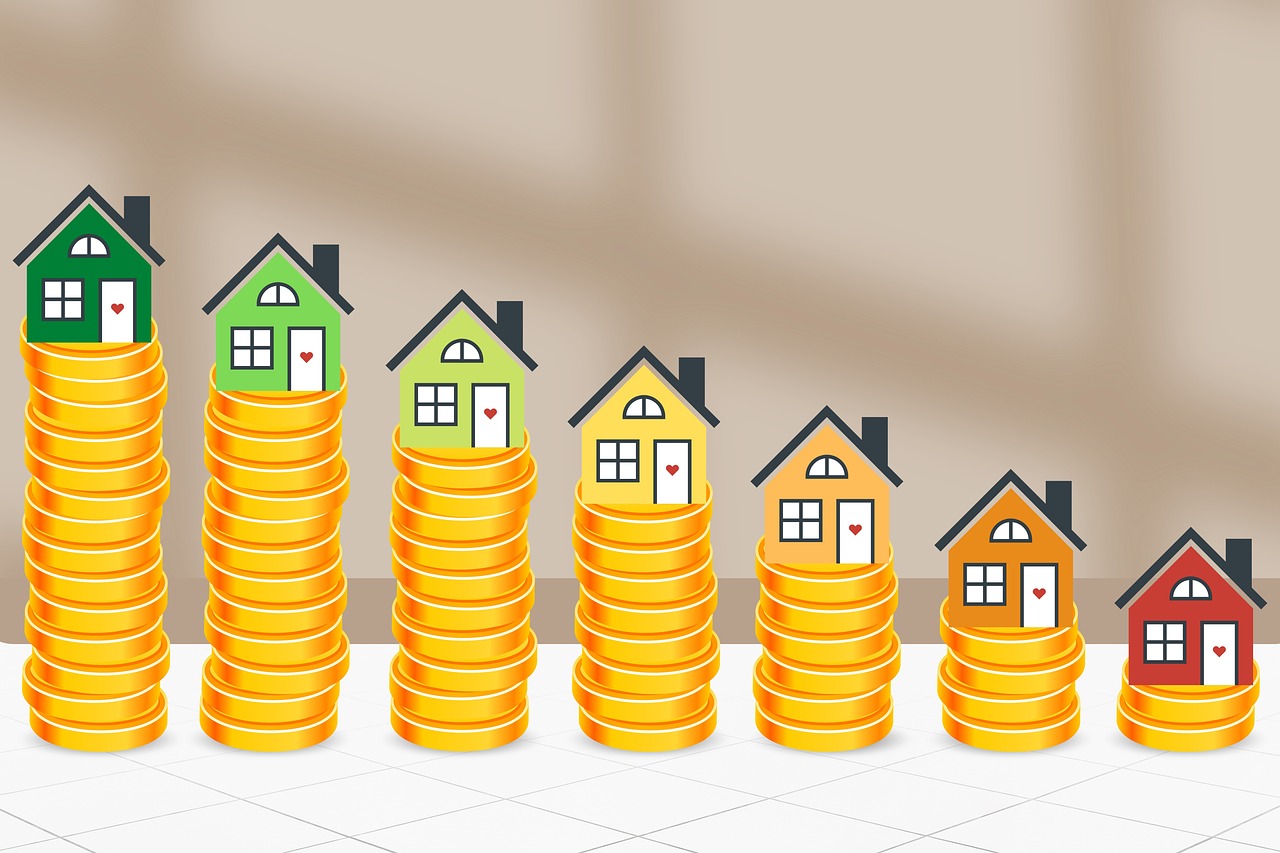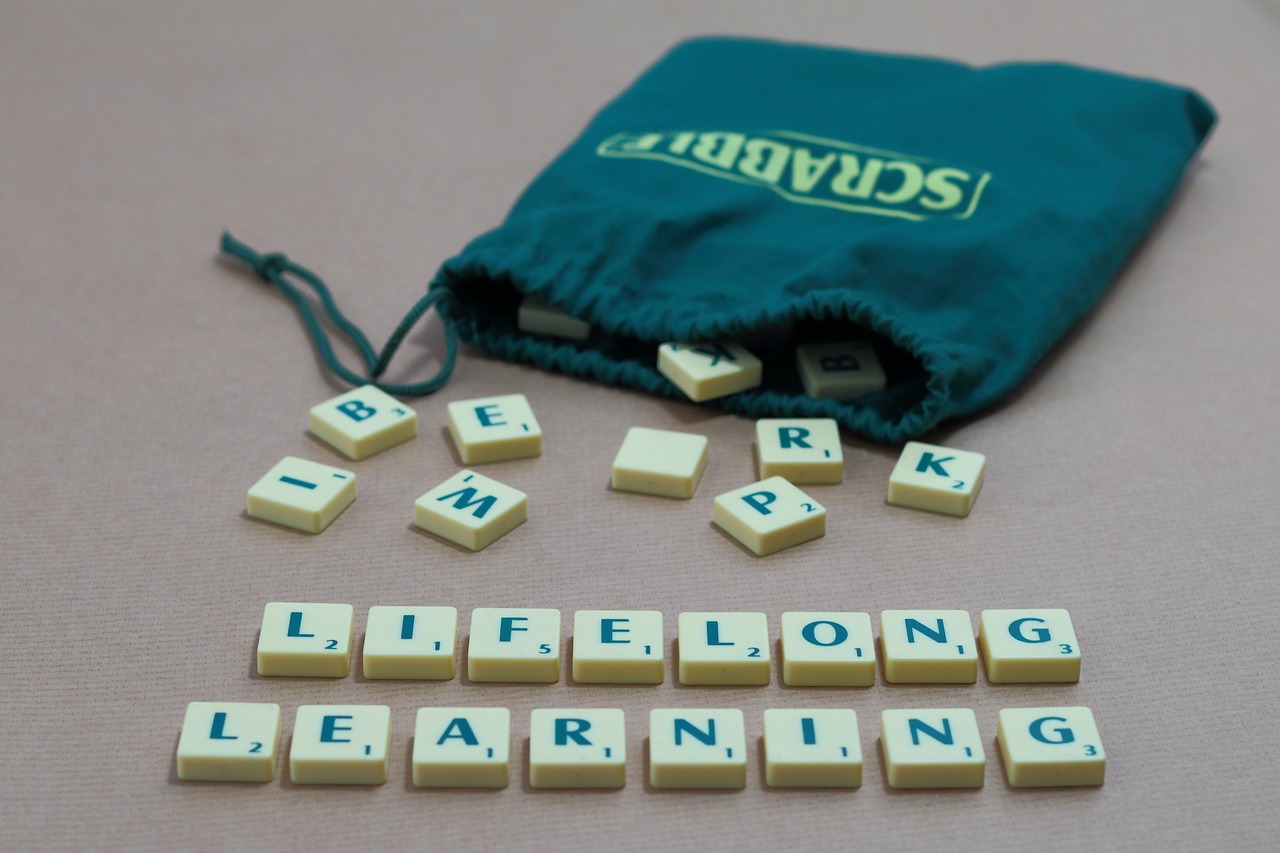How to Encourage Your Community to Embrace Sustainability?
In today's world, where climate change and environmental degradation are at the forefront of global issues, encouraging your community to embrace sustainability is not just a noble endeavor; it is a necessity. But how do you go about fostering an environment where sustainability is not only accepted but celebrated? It starts with understanding the importance of sustainability, engaging the community through education, and creating initiatives that make sustainable practices accessible and rewarding. By employing practical strategies tailored to your community's unique needs, you can ignite a passion for sustainability that resonates with every individual.
Imagine your community as a vibrant garden, where each person plays a role in nurturing the environment. Just as a garden thrives with care and attention, so too can a community flourish when its members are informed and motivated to adopt eco-friendly practices. This article will explore effective strategies that can help transform your community into a beacon of sustainability. From educational programs to collaborative projects, every effort counts in making a significant impact.
So, what are the key elements that can help you encourage sustainability in your community? Let's dive into the foundational aspects that pave the way for a greener future.
Before we can inspire change, we must first understand what sustainability truly means. At its core, sustainability is about balancing environmental health, economic viability, and social equity. It’s a holistic approach that considers the long-term impacts of our actions on the planet and future generations. When we talk about sustainability, we are referring to practices that ensure we meet our own needs without compromising the ability of future generations to meet theirs. This concept is crucial for fostering a community that is not only aware of its ecological footprint but is also committed to reducing it.
One of the most effective ways to promote sustainability is through community education programs. These initiatives can help raise awareness about the importance of sustainable practices and empower individuals to take action in their daily lives. Educational programs can take many forms, including workshops, seminars, and interactive sessions that make learning engaging and enjoyable.
Hosting workshops and seminars can provide invaluable hands-on learning experiences for community members. These events can cover a range of topics, from composting and gardening to energy conservation and waste reduction. By participating in these workshops, individuals can gain practical skills that they can apply in their own lives. Not only do these events educate, but they also foster a sense of community as participants share ideas and experiences.
Inviting knowledgeable guest speakers can significantly enhance the educational experience. Experts in sustainability can share their insights and experiences, providing valuable information that might not be readily available. By exposing community members to diverse perspectives, you can spark greater interest and motivation to engage in sustainable practices.
Incorporating interactive learning sessions into your educational programs can make the experience even more impactful. Activities such as group discussions, hands-on projects, and even fun challenges can encourage participation and make learning about sustainability enjoyable. When community members actively engage in the learning process, they are more likely to retain information and apply it in their lives.
Engaging in collaborative community projects is another effective strategy for promoting sustainability. These projects can range from community gardens and clean-up days to tree planting initiatives. By working together towards common goals, community members can strengthen their bonds and create a sense of ownership over their local environment.
Sometimes, a little motivation goes a long way. Implementing incentive programs can encourage individuals to adopt sustainable habits. For instance, offering rewards for recycling, reducing energy consumption, or participating in community clean-up events can create a culture of sustainability. When people see tangible benefits for their efforts, they are more likely to engage in sustainable practices.
Establishing effective recycling programs can significantly reduce waste in your community. By providing convenient recycling options and educating residents about what can and cannot be recycled, you can foster a culture of recycling that benefits everyone. Consider organizing community-wide recycling drives or competitions to encourage participation.
Another way to incentivize sustainable practices is by offering green certifications for local businesses. Recognizing and promoting businesses that adopt eco-friendly practices not only benefits the environment but also encourages others to follow suit. This can create a ripple effect, leading to a more sustainable local economy.
Collaborating with local organizations can amplify your sustainability efforts. Partnerships with schools, businesses, and non-profits can enhance community engagement and provide additional resources for sustainability initiatives. By working together, you can leverage each organization's strengths to create a more significant impact.
Engaging local government in sustainability efforts can provide essential support. Local authorities can implement policies that promote sustainable practices, such as incentives for renewable energy use or funding for community projects. By advocating for sustainability at the local level, you can create a framework that encourages community participation.
Partnering with non-profit organizations can also be beneficial. These organizations often have expertise and resources that can help further your community's sustainability efforts. Collaborating on initiatives can provide additional funding, volunteers, and knowledge, enhancing the overall effectiveness of your programs.
Q: What are some simple ways to start being more sustainable in my daily life?
A: You can start by reducing single-use plastics, recycling, conserving water, and using energy-efficient appliances. Small changes can make a big difference!
Q: How can I get my local government involved in sustainability initiatives?
A: Attend local government meetings, advocate for sustainable policies, and propose community projects that align with their goals.
Q: What role do schools play in promoting sustainability?
A: Schools can serve as educational hubs for sustainability, teaching students about environmental issues and encouraging them to participate in eco-friendly initiatives.

Understanding Sustainability
Sustainability is a term that has gained significant traction in recent years, but what does it really mean? At its core, sustainability refers to the ability to meet our current needs without compromising the ability of future generations to meet theirs. It encompasses a delicate balance between three critical pillars: environmental health, economic viability, and social equity. Imagine a three-legged stool; if one leg is shorter than the others, the entire structure becomes unstable. Similarly, for a community to thrive sustainably, all three pillars must be in harmony.
First, let’s dive into environmental health. This aspect focuses on preserving our natural resources and ecosystems. It’s about ensuring clean air, water, and soil for all living beings. For instance, consider the impact of pollution; it doesn’t just harm wildlife but also affects human health. By adopting sustainable practices, such as reducing waste and conserving energy, communities can significantly improve their environmental footprint.
Next up is economic viability. A sustainable economy is one that provides jobs and supports local businesses while minimizing environmental impact. Think of it as planting seeds in a garden; if you nurture the soil (the economy) while also ensuring that the plants (the environment) have enough light and water, you’ll cultivate a thriving ecosystem. Communities can foster economic sustainability by promoting local products, supporting green businesses, and encouraging innovation in eco-friendly technologies.
Lastly, we have social equity, which emphasizes fairness and inclusivity. It’s crucial that all community members have access to resources and opportunities. Imagine a community where everyone has a voice, and decisions are made collectively. When people feel valued and included, they are more likely to engage in sustainability efforts. This can involve creating programs that educate and empower marginalized groups, ensuring that the benefits of sustainability are shared by all.
In summary, understanding sustainability means recognizing the interconnectedness of these three pillars. A community that prioritizes sustainability is one that not only cares for the planet but also fosters economic growth and social well-being. By working together, we can create a sustainable future that benefits everyone. So, how can we begin this journey towards sustainability? The answer lies in education, community involvement, and a strong commitment to change.

Community Education Programs
Implementing educational programs is a cornerstone for raising awareness about sustainability within communities. These programs serve as a bridge, connecting individuals with the knowledge and skills necessary to adopt sustainable practices in their daily lives. Think of it as planting a seed; with the right nurturing, that seed can grow into a flourishing tree of environmental consciousness. By educating community members, we can cultivate a culture that values and prioritizes sustainability, leading to a healthier planet for future generations.
One effective way to engage community members is through workshops and seminars. These events provide hands-on learning experiences, allowing participants to dive deep into sustainability topics. Imagine a group of neighbors coming together to learn about composting; they not only gain valuable knowledge but also bond over a shared goal. Workshops can cover a variety of subjects, from renewable energy solutions to urban gardening techniques. By offering a range of topics, we can cater to diverse interests and encourage more people to participate.
Hosting workshops and seminars can be a game-changer in promoting sustainable practices. These events can be designed to be interactive, engaging, and informative. For instance, a workshop on DIY eco-friendly products can empower attendees to create their own cleaning supplies, reducing reliance on harmful chemicals. Not only does this save money, but it also fosters a sense of accomplishment and self-sufficiency. The excitement of learning something new can spark a passion for sustainability that attendees carry into their everyday lives.
Inviting guest speakers who are experts in sustainability can significantly enhance the learning experience. These knowledgeable individuals bring a wealth of information and real-world experiences that can inspire and motivate community members. Imagine a local farmer sharing insights on organic farming practices or a climate scientist discussing the implications of climate change. Their stories can resonate deeply, making the concept of sustainability feel more tangible and urgent. By showcasing a variety of perspectives, we can create a richer understanding of sustainability and its multifaceted nature.
Interactive learning sessions are another fantastic way to engage community members. These sessions can include activities like group discussions, hands-on projects, or even games that teach sustainability concepts. For example, a scavenger hunt focused on identifying local plants can help participants learn about native species and their ecological importance. The more involved individuals are in the learning process, the more likely they are to remember and apply what they've learned. Making education fun and memorable is key to fostering a lasting commitment to sustainable practices.
In conclusion, community education programs are vital for fostering a culture of sustainability. By implementing workshops, inviting guest speakers, and creating interactive learning experiences, we can empower individuals to make informed decisions that positively impact the environment. As we work together to educate our communities, we not only enhance knowledge but also strengthen our collective commitment to a sustainable future.
- What are community education programs? Community education programs are initiatives designed to educate individuals about sustainability and encourage the adoption of eco-friendly practices.
- How can I get involved in community education programs? You can participate by attending workshops, volunteering to host events, or collaborating with local organizations focused on sustainability.
- What topics are typically covered in sustainability workshops? Topics may include recycling, composting, renewable energy, sustainable gardening, and reducing waste.
- How can guest speakers enhance community education? Guest speakers provide expert insights and real-world experiences, making sustainability concepts more relatable and inspiring.
- Why are interactive learning sessions important? They engage participants actively, making the learning process enjoyable and memorable, which can lead to lasting behavioral changes.

Workshops and Seminars
When it comes to educating communities about sustainability, play a pivotal role. These interactive events not only provide valuable information but also create a space for community members to engage with one another, share ideas, and develop a sense of collective responsibility towards the environment. Imagine walking into a room filled with eager faces, each person ready to learn how they can make a difference. This is the magic of workshops and seminars—they transform passive learning into an active dialogue.
Hosting these events can take many forms, from hands-on demonstrations to informative talks. For instance, a workshop might focus on practical skills, such as composting or urban gardening, where participants can get their hands dirty and see the immediate impact of their efforts. This kind of experiential learning not only makes the information more relatable but also empowers individuals to implement these practices in their own lives. After all, isn’t it easier to adopt a new habit when you’ve tried it yourself?
Moreover, seminars can bring in experts who can provide deeper insights into sustainability topics. For example, a local environmental scientist might discuss the effects of climate change on the community, while a sustainability consultant could share strategies for reducing energy consumption. By inviting knowledgeable speakers, communities can tap into a wealth of resources and expertise, sparking interest and motivation among attendees.
To make these events even more engaging, incorporating interactive learning sessions is essential. This could involve group discussions, brainstorming activities, or even role-playing scenarios where participants can explore environmental challenges and solutions together. Such interactions not only enhance learning but also foster a sense of community as individuals collaborate to tackle real-world issues.
In summary, workshops and seminars are vital tools for promoting sustainability within communities. They provide a platform for learning, sharing, and connecting, ultimately inspiring individuals to take action. As we encourage more communities to embrace sustainability, let’s not underestimate the power of gathering together to learn and grow. After all, every small step taken collectively can lead to significant change!
Q: How can I organize a successful workshop on sustainability?
A: Start by identifying a relevant topic and securing knowledgeable speakers. Promote the event through social media and local community boards to attract participants. Ensure the workshop includes interactive elements to engage attendees.
Q: What types of activities can be included in a sustainability seminar?
A: Activities can range from expert presentations to panel discussions and Q&A sessions. Incorporating hands-on demonstrations or group activities can also enhance engagement and learning.
Q: How can I measure the impact of workshops and seminars on community sustainability efforts?
A: Consider conducting surveys before and after the events to gauge participants’ knowledge and attitudes towards sustainability. Tracking the implementation of practices discussed during the events can also provide insight into their effectiveness.

Guest Speakers
Inviting to your community events can be a game-changer when it comes to promoting sustainability. Imagine the buzz in the room as a renowned environmentalist shares their insights, or a local entrepreneur discusses innovative eco-friendly practices. These speakers bring a wealth of knowledge and a fresh perspective that can ignite passion and inspire action among community members. But why is this so effective?
First, guest speakers provide an opportunity for real-world experience. They often share stories that highlight the practical application of sustainability concepts, making the information relatable and actionable. For example, a speaker from a successful recycling initiative can illustrate how their efforts have reduced waste in the community, showing attendees that change is possible and within reach.
Moreover, these sessions can foster a sense of community engagement. When people come together to listen to an expert, it creates a shared experience that can strengthen bonds among participants. The excitement of learning something new can lead to discussions, questions, and even collaborations that extend beyond the event itself.
To maximize the impact of guest speakers, consider the following strategies:
- Choose speakers who resonate with your audience: Tailor your selection to the interests and concerns of your community. A local figure may be more relatable than a distant celebrity.
- Encourage interaction: Allow time for Q&A sessions. This not only engages the audience but also provides a platform for deeper understanding.
- Follow up: Share recorded sessions or key takeaways after the event. This keeps the conversation going and reinforces the messages conveyed.
In conclusion, guest speakers can transform sustainability events into dynamic learning experiences. They not only educate but also empower individuals to take action in their own lives. By creating a space where community members can connect with knowledgeable experts, you're laying the groundwork for a more sustainable future. So, why not start planning your next event with a guest speaker who can inspire change? The possibilities are endless, and the impact can be profound.
Q: How do I find guest speakers for my sustainability events?
A: You can reach out to local universities, environmental organizations, or industry professionals. Networking through community events can also help you connect with potential speakers.
Q: What topics should guest speakers cover?
A: Topics can range from renewable energy solutions to sustainable agriculture practices. It's best to choose subjects that resonate with your community's interests and needs.
Q: How can I promote the event to attract attendees?
A: Utilize social media, local community boards, and newsletters. Collaborating with local businesses can also help spread the word.
Q: Should I offer compensation to guest speakers?
A: While some speakers may volunteer their time, others may expect a fee. It’s important to discuss this upfront to ensure clarity and mutual respect.

Interactive Learning Sessions
When it comes to fostering a culture of sustainability within a community, can be a game-changer. Imagine a vibrant space filled with community members, all buzzing with excitement as they participate in engaging activities that not only educate but also inspire. These sessions are more than just lectures; they are dynamic experiences that encourage participants to roll up their sleeves and dive into the world of sustainability.
One of the most effective ways to implement these sessions is through hands-on activities. For example, you might organize a community garden project where residents learn about organic gardening techniques while planting vegetables together. This not only teaches sustainable agriculture practices but also builds a sense of community and belonging. Participants can share tips, trade seeds, and even enjoy the fruits of their labor together, creating lasting memories and friendships.
Moreover, incorporating technology can elevate these interactive sessions to new heights. Utilizing apps or online platforms can facilitate virtual workshops where community members can connect with experts from around the globe. This way, they can learn about cutting-edge sustainable practices without leaving their homes. Imagine a local farmer attending a workshop on vertical farming techniques led by an expert from another country, all while sitting in their living room!
Additionally, gamifying the learning experience can significantly enhance engagement. Consider organizing a sustainability challenge where participants earn points for completing eco-friendly tasks, such as reducing energy consumption or participating in clean-up drives. At the end of the challenge, you could host a celebration event where winners are recognized, and everyone shares their experiences. This not only motivates individuals to adopt sustainable practices but also creates a fun and competitive atmosphere that encourages participation.
Another fantastic approach is to include interactive discussions during these sessions. Allowing participants to share their thoughts and experiences can foster a deeper understanding of sustainability issues. Create small breakout groups where people can discuss specific topics, such as renewable energy or waste reduction strategies. This format encourages collaboration and can lead to innovative ideas that can be implemented within the community.
In summary, interactive learning sessions are a powerful tool for promoting sustainability. By incorporating hands-on activities, technology, gamification, and discussions, communities can create engaging and memorable experiences that inspire individuals to embrace sustainable practices. The key is to make learning fun and accessible, ensuring that everyone feels empowered to contribute to a greener future.
- What are interactive learning sessions? - These are engaging educational experiences that involve hands-on activities and discussions to promote sustainability.
- How can I organize an interactive learning session? - Start by identifying a topic, gathering materials, and inviting participants. Incorporate activities that encourage engagement and learning.
- What are some examples of activities for these sessions? - Community gardening, sustainability challenges, and interactive discussions are great examples.

Collaborative Community Projects
When it comes to fostering sustainability, are like the glue that holds a community together. These initiatives not only promote environmental consciousness but also strengthen the bonds among community members. Picture this: a group of neighbors coming together to transform a vacant lot into a vibrant community garden. This isn't just about planting seeds; it's about sowing the roots of cooperation, engagement, and shared responsibility.
One of the key benefits of collaborative projects is the sense of ownership they instill in participants. When individuals work together towards a common goal, they feel more connected to their community and more invested in its success. This is where the magic happens—people become advocates for sustainability in their everyday lives, encouraging others to follow suit. For instance, a community clean-up event can lead to lasting changes in attitudes toward waste management and environmental stewardship.
Moreover, these projects can take many forms, catering to the diverse interests and skills within a community. From organizing a community composting program to launching a neighborhood solar panel initiative, the possibilities are endless. Each project can serve as a platform for education and inspiration, showcasing how collective efforts can lead to significant environmental impacts. The more people see the positive outcomes of their collaboration, the more likely they are to engage in future sustainability efforts.
To illustrate the potential of collaborative community projects, consider the following table that highlights some successful initiatives:
| Project Name | Description | Impact |
|---|---|---|
| Green Spaces Initiative | Transforming underutilized lots into parks and gardens. | Increased biodiversity and community engagement. |
| Neighborhood Energy Challenge | Encouraging residents to reduce energy consumption through friendly competition. | Lower energy bills and reduced carbon footprint. |
| Local Farmers Market | Supporting local agriculture by connecting farmers with consumers. | Boosted local economy and increased access to fresh produce. |
In essence, collaborative community projects serve as a catalyst for change. They empower individuals to take action while simultaneously building a supportive network of like-minded people. When communities unite to tackle sustainability challenges, they not only create a better environment but also foster a culture of cooperation and mutual respect. So, the next time you're considering how to make a difference, think about how you can bring your community together for a common cause. After all, as the saying goes, "many hands make light work." Together, we can cultivate a more sustainable future!
- What are collaborative community projects?
Collaborative community projects are initiatives where community members work together towards a common goal, often focusing on sustainability and environmental stewardship. - How can I get involved in a local project?
Check local community boards, social media groups, or municipal websites for information on upcoming projects and volunteer opportunities. - What are some examples of successful collaborative projects?
Examples include community gardens, clean-up events, and local farmers' markets that promote sustainable practices. - Why are these projects important?
They foster community bonds, raise awareness about sustainability, and lead to tangible environmental benefits.

Incentivizing Sustainable Practices
When it comes to embracing sustainability, motivation can be the spark that ignites a community's efforts. Incentives play a crucial role in encouraging individuals to adopt sustainable habits. Think of it as a friendly nudge, reminding everyone that their small actions can lead to significant changes. By implementing various incentive programs, communities can actively engage their members in sustainability initiatives, making it not just a responsibility but a rewarding experience.
One of the most effective ways to promote sustainability is through recycling programs. These initiatives can significantly reduce waste and promote a cleaner environment. Imagine a community where everyone participates in recycling, turning what was once trash into valuable resources. To establish an effective recycling program, communities can:
- Provide clear guidelines on what can and cannot be recycled.
- Set up easily accessible recycling bins in public places.
- Organize community clean-up events to raise awareness.
Moreover, offering green certifications can be a powerful incentive for local businesses. These certifications not only recognize businesses that adopt eco-friendly practices but also promote them as leaders in sustainability. When a business earns a green certification, it sends a strong message to consumers that they are committed to protecting the environment. This can lead to increased customer loyalty and even attract new customers who prioritize sustainability in their purchasing decisions.
Incentives can also come in the form of financial rewards. For instance, communities can implement programs that offer discounts on utility bills for households that demonstrate energy-saving practices. This not only motivates residents to adopt sustainable habits but also helps them save money in the long run. Imagine receiving a monthly bill that reflects your commitment to sustainability—it's a win-win situation!
Additionally, hosting competitions can create a fun and engaging way to promote sustainability. Communities can organize events where residents compete to see who can reduce their waste the most or who can come up with the most innovative recycling idea. These competitions can foster a sense of camaraderie among participants and make sustainability a community-wide effort.
As we explore the various ways to incentivize sustainable practices, it’s essential to remember that the goal is to create a culture of sustainability where everyone feels involved and valued. The more people see the benefits of their actions—both for themselves and the environment—the more likely they are to continue those practices. By combining education, recognition, and tangible rewards, communities can build a strong foundation for sustainable living.
Q: What are some examples of effective recycling programs?
A: Effective recycling programs often include clear guidelines, accessible bins, and community awareness events. Engaging the community through educational campaigns can also enhance participation.
Q: How can green certifications benefit local businesses?
A: Green certifications can boost a business's reputation, attract eco-conscious customers, and provide a competitive edge in the market. They also demonstrate a commitment to sustainability, which can enhance customer loyalty.
Q: What types of financial incentives can communities offer?
A: Communities can offer discounts on utility bills, tax breaks for sustainable practices, or even grants for businesses that implement eco-friendly initiatives.
Q: How can competitions promote sustainability?
A: Competitions can create excitement and engagement around sustainable practices. They encourage creativity and collaboration, making sustainability a fun and community-oriented goal.

Recycling Programs
Recycling programs are a cornerstone of sustainable community practices. They not only help reduce waste but also promote a culture of environmental responsibility. By implementing effective recycling initiatives, communities can significantly decrease the amount of waste sent to landfills, which is a critical step in combating pollution and conserving natural resources. So, how can we kick-start these programs to ensure maximum participation and impact?
First and foremost, it’s essential to educate community members about what can and cannot be recycled. Many people are often confused about recycling guidelines, which can lead to contamination of recyclable materials. To address this, communities can create informative materials, such as flyers or brochures, that outline the recycling process. For example, a simple table can clarify recyclable items:
| Recyclable Items | Non-Recyclable Items |
|---|---|
| Paper (newspapers, magazines) | Food-soiled paper |
| Cardboard (flattened boxes) | Pizza boxes |
| Plastics (bottles, containers) | Plastic bags |
| Metals (aluminum cans) | Foil wrappers |
Moreover, community-wide events like “Recycling Drives” can further engage residents. These events can serve as a fun and interactive way to encourage people to bring their recyclables to a central location. Imagine a bustling park filled with families, all excited to drop off their recyclables, while local volunteers provide tips and tricks on how to recycle more effectively. This not only fosters a sense of community but also makes recycling a shared responsibility.
Additionally, incorporating technology can streamline recycling efforts. Many communities are now utilizing apps that inform residents about recycling schedules, locations of drop-off centers, and even provide reminders for recycling days. This tech-savvy approach can significantly enhance participation rates, especially among younger community members who are accustomed to using their smartphones for everyday tasks.
Incentives play a crucial role in motivating individuals to participate in recycling programs. Communities can introduce reward systems where residents earn points for their recycling efforts, which can then be redeemed for discounts at local businesses or community events. This not only promotes recycling but also supports the local economy, creating a win-win situation for everyone involved.
Finally, it’s vital to continuously evaluate and improve recycling programs. Gathering feedback from community members can provide valuable insights into what works and what doesn’t. By adapting and evolving these programs, communities can ensure they remain effective and engaging, ultimately leading to a more sustainable future.
- What items are typically recyclable? Most communities accept paper, cardboard, plastics (marked with recycling symbols), and metals.
- How can I find out my local recycling schedule? Check your city's official website or download a recycling app that provides up-to-date information.
- Can I recycle items that are contaminated with food? Generally, no. Food-soiled items should be disposed of in the trash as they can contaminate the recycling stream.
- Are there any rewards for recycling in my community? Many communities have started incentive programs that offer discounts or rewards for active recyclers.

Green Certifications
In today's eco-conscious world, have emerged as a powerful tool for promoting sustainability among businesses and organizations. These certifications serve as a badge of honor, signaling to consumers that a business is committed to environmentally friendly practices. But what exactly are green certifications, and how do they work? Essentially, they are formal recognitions awarded to businesses that meet specific environmental standards, which can range from energy efficiency to waste reduction.
One of the most significant benefits of green certifications is that they not only help businesses improve their sustainability practices but also enhance their brand image. When a company can proudly display its certification, it attracts customers who prioritize eco-friendliness. This is particularly important in a market where consumers are increasingly making purchasing decisions based on a brand's environmental impact.
Furthermore, green certifications can lead to tangible financial benefits. For instance, many organizations that adopt sustainable practices often find that they can reduce operational costs by minimizing waste and improving energy efficiency. This creates a win-win situation where businesses not only contribute to a healthier planet but also enjoy improved profit margins.
There are various types of green certifications available, each tailored to different industries and practices. Here are a few notable examples:
- LEED (Leadership in Energy and Environmental Design): This certification focuses on sustainable building practices and is widely recognized in the construction industry.
- Energy Star: This program helps businesses and individuals save money and protect the environment through energy-efficient products and practices.
- Green Seal: This certification is aimed at products and services that meet rigorous environmental standards.
To encourage local businesses to pursue green certifications, communities can offer support in various ways. For example, local governments can provide resources and workshops to help businesses understand the certification process. Additionally, creating a network of certified businesses can foster a sense of community among local enterprises, encouraging them to share best practices and collaborate on sustainability initiatives.
In conclusion, green certifications represent a significant opportunity for businesses to demonstrate their commitment to sustainability while reaping financial rewards. By supporting local enterprises in their quest for certification, communities can cultivate a culture of sustainability that benefits everyone. As businesses become more eco-conscious, they not only help the environment but also inspire others to follow suit, ultimately leading to a more sustainable future.
1. What is a green certification?
A green certification is a formal recognition awarded to businesses that meet specific environmental standards, demonstrating their commitment to sustainability.
2. How can green certifications benefit my business?
Green certifications can enhance your brand image, attract eco-conscious consumers, and lead to cost savings through improved operational efficiency.
3. Are there different types of green certifications?
Yes, there are various certifications tailored to different industries, including LEED for buildings, Energy Star for energy efficiency, and Green Seal for products and services.
4. How can my community support local businesses in obtaining green certifications?
Communities can provide resources, workshops, and create networks of certified businesses to share best practices and foster collaboration on sustainability initiatives.

Building Partnerships
When it comes to promoting sustainability in our communities, one of the most effective strategies is . Collaborating with local organizations can significantly amplify sustainability efforts, creating a ripple effect that reaches far beyond individual actions. Think of it like a team sport; when everyone plays together, the chances of winning increase dramatically. By pooling resources, knowledge, and passion, communities can tackle environmental challenges more effectively.
Partnering with a variety of local entities—including schools, businesses, and non-profit organizations—can enhance community engagement in sustainability initiatives. For instance, when schools incorporate sustainability into their curriculum, they not only educate young minds but also inspire families to adopt eco-friendly practices. Imagine a school project where students create a community garden; not only do they learn about growing food sustainably, but they also engage their families and neighbors, creating a shared sense of responsibility.
Furthermore, local businesses can play a pivotal role in this partnership dynamic. By adopting sustainable practices, they not only reduce their carbon footprint but also set an example for the community. For example, a local café that uses biodegradable cups or a grocery store that promotes local produce can influence consumer behavior. When businesses lead by example, it encourages community members to align their purchasing habits with sustainable values.
In addition to schools and businesses, non-profit organizations are crucial allies in the fight for sustainability. These organizations often possess specialized knowledge and resources that can help communities implement effective sustainability programs. They can provide training, materials, and even funding for projects that might otherwise be out of reach. For example, a non-profit focused on environmental conservation could partner with a community to organize a tree-planting event, bringing together volunteers and providing the necessary tools and expertise.
To illustrate the potential impact of these partnerships, consider the following table that outlines various local partnerships and their contributions to sustainability:
| Partnership Type | Contribution to Sustainability |
|---|---|
| Schools | Educational programs, community gardens, recycling initiatives |
| Businesses | Eco-friendly practices, community events, sponsorships |
| Non-Profits | Resource provision, training sessions, funding opportunities |
| Local Government | Policy support, funding for projects, community outreach |
Moreover, engaging local government is another vital aspect of building partnerships. When communities work alongside local authorities, they can influence policies that promote sustainability. This collaboration can lead to initiatives such as improved waste management systems, enhanced public transportation options, and the development of green spaces. It’s a win-win situation, as local governments often seek community input to create policies that reflect the needs and desires of their constituents.
In summary, building partnerships is not just beneficial; it’s essential for fostering a culture of sustainability within communities. By working together—schools, businesses, non-profits, and local governments—communities can create a more sustainable future. So, why not reach out to your neighbors and local organizations? Together, you can make a significant impact, turning the dream of a sustainable community into a reality.
- What are the benefits of building partnerships for sustainability?
Partnerships can enhance resource sharing, increase community engagement, and lead to more effective sustainability initiatives. - How can I get involved in local sustainability efforts?
Look for local organizations or community groups focused on sustainability, and consider volunteering or attending events. - What role do local governments play in sustainability?
Local governments can implement policies that support sustainable practices and provide funding for community projects.

Local Government Involvement
When it comes to fostering sustainability within communities, the role of local government cannot be overstated. Local governments act as the backbone of community initiatives, providing the necessary support, resources, and frameworks to implement sustainable practices effectively. They have the unique ability to create policies that not only encourage but also enforce sustainable behaviors among residents and businesses alike. But what does this involvement look like in practice? Let's dive deeper.
One of the primary ways local governments can promote sustainability is through policy development. By creating regulations that prioritize environmental protection, local authorities can set the stage for a greener future. For instance, implementing zoning laws that favor green spaces or mandating energy-efficient building codes can significantly reduce a community's carbon footprint. These policies serve as a guiding light, helping residents understand the importance of sustainability and how they can contribute.
Moreover, local governments can initiate public awareness campaigns that educate citizens about sustainability issues. Imagine a community where everyone is informed about the benefits of recycling, energy conservation, and sustainable transportation options. Through workshops, social media, and community events, local governments can disseminate vital information, transforming public perception and encouraging proactive participation in sustainability initiatives.
Additionally, local governments can facilitate funding opportunities for sustainability projects. By allocating budgetary resources to eco-friendly initiatives, they can empower community organizations and businesses to take action. For example, providing grants for solar panel installations or funding community gardens not only enhances local ecosystems but also fosters a sense of ownership among residents. When people see their government investing in sustainability, they are more likely to get involved and support these efforts.
Collaboration is another critical aspect of local government involvement. By partnering with local businesses, schools, and non-profits, governments can create a network of support that amplifies sustainability efforts. These partnerships can lead to innovative solutions and shared resources, making it easier for communities to implement sustainable practices. For instance, a local government might collaborate with a non-profit organization to create a community recycling program, pooling resources and expertise to maximize impact.
In conclusion, local government involvement is essential for building a sustainable community. By developing supportive policies, raising public awareness, funding projects, and fostering collaborations, local governments can lead the charge toward a more environmentally friendly future. The question remains: how can you, as a community member, engage with your local government to advocate for sustainability? Your voice matters, and together, we can create a greener tomorrow.
- How can I get involved with my local government's sustainability initiatives? Check your local government website for upcoming meetings, volunteer opportunities, and initiatives that you can support.
- What are some examples of successful local government sustainability programs? Many cities have implemented programs like community recycling, renewable energy incentives, and urban green spaces. Research successful models in your area!
- How can I advocate for more sustainability efforts in my community? Attend town hall meetings, communicate with your local representatives, and gather support from fellow community members to push for sustainable policies.

Non-Profit Collaborations
When it comes to fostering sustainability within a community, can play a pivotal role. These organizations often possess specialized knowledge and resources that can significantly enhance local sustainability initiatives. By partnering with non-profits, communities can tap into a wealth of expertise, innovative strategies, and established networks that can drive impactful change.
For instance, many non-profits focus on environmental education, conservation efforts, and community engagement. They bring valuable programs that can educate residents about sustainable practices, such as waste reduction, energy efficiency, and sustainable agriculture. When communities collaborate with these organizations, they can host workshops, community clean-up events, and educational campaigns that not only inform but also inspire residents to take action.
Moreover, non-profits often have access to funding opportunities that can support sustainability projects. By working together, communities can apply for grants or sponsorships that might be unavailable to them individually. This financial support can be crucial for implementing large-scale initiatives, such as community gardens, renewable energy projects, or local recycling programs. The synergy created through these collaborations can lead to more substantial and sustainable outcomes.
Consider the following key benefits of partnering with non-profit organizations:
- Expertise: Non-profits often have staff with specialized knowledge in sustainability, enabling communities to benefit from their insights and experience.
- Resource Sharing: Collaborations can lead to shared resources, including volunteers, materials, and funding, making projects more feasible and impactful.
- Community Engagement: Non-profits are skilled at mobilizing community members, fostering a sense of ownership and participation in sustainability efforts.
- Networking Opportunities: Partnerships can open doors to other organizations and stakeholders, creating a broader support network for sustainability initiatives.
As an example, a local non-profit focused on environmental education might partner with a community to launch a “Green Schools” initiative. This program could involve workshops for teachers on sustainability practices, student-led projects to reduce waste in schools, and community events that promote recycling and conservation efforts. Such partnerships not only enhance educational outcomes but also instill a culture of sustainability among young people, ensuring that future generations are equipped to tackle environmental challenges.
In conclusion, non-profit collaborations are essential for enhancing community sustainability efforts. By leveraging the expertise, resources, and networks of these organizations, communities can create meaningful change that resonates far beyond individual initiatives. It’s about building a sustainable future together, where everyone plays a role in protecting our planet.
Q1: How can I find non-profit organizations to partner with for sustainability initiatives?
A1: Look for local environmental organizations, community development groups, or educational institutions that focus on sustainability. Websites like GuideStar can help you identify non-profits in your area.
Q2: What types of projects can be developed through non-profit collaborations?
A2: Projects can range from community gardens, recycling programs, educational workshops, to larger initiatives like renewable energy installations or conservation efforts. The possibilities are vast and can be tailored to your community's needs.
Q3: How can we ensure a successful partnership with a non-profit organization?
A3: Clear communication, shared goals, and mutual respect are key. Establishing a formal agreement outlining each party's roles and responsibilities can also help ensure a successful collaboration.
Frequently Asked Questions
- What is sustainability and why is it important?
Sustainability refers to the ability to meet our present needs without compromising the ability of future generations to meet theirs. It’s crucial because it promotes a balance between the environment, economy, and social equity, ensuring a healthy planet for everyone.
- How can community education programs help promote sustainability?
Community education programs raise awareness and empower individuals to adopt sustainable practices. By offering workshops, seminars, and interactive sessions, these programs can make learning about sustainability engaging and practical.
- What types of workshops are effective for teaching sustainability?
Workshops that provide hands-on experiences, such as gardening, composting, or DIY recycling projects, are highly effective. They allow participants to practice what they learn, making the information more memorable and applicable in their daily lives.
- How can incentives encourage sustainable practices in the community?
Incentives, like recycling programs and green certifications, motivate community members by recognizing their efforts. These initiatives can create a culture of sustainability, where people feel rewarded for making eco-friendly choices.
- What role do local governments play in promoting sustainability?
Local governments can provide essential support through policies, funding, and resources. They can help implement sustainability initiatives and engage the community in collaborative efforts, significantly amplifying the impact of these programs.
- How can partnerships with local organizations enhance sustainability efforts?
Collaborating with schools, businesses, and non-profits can bring diverse resources and expertise to sustainability initiatives. These partnerships can lead to innovative projects that engage more community members and foster a collective commitment to sustainability.



















